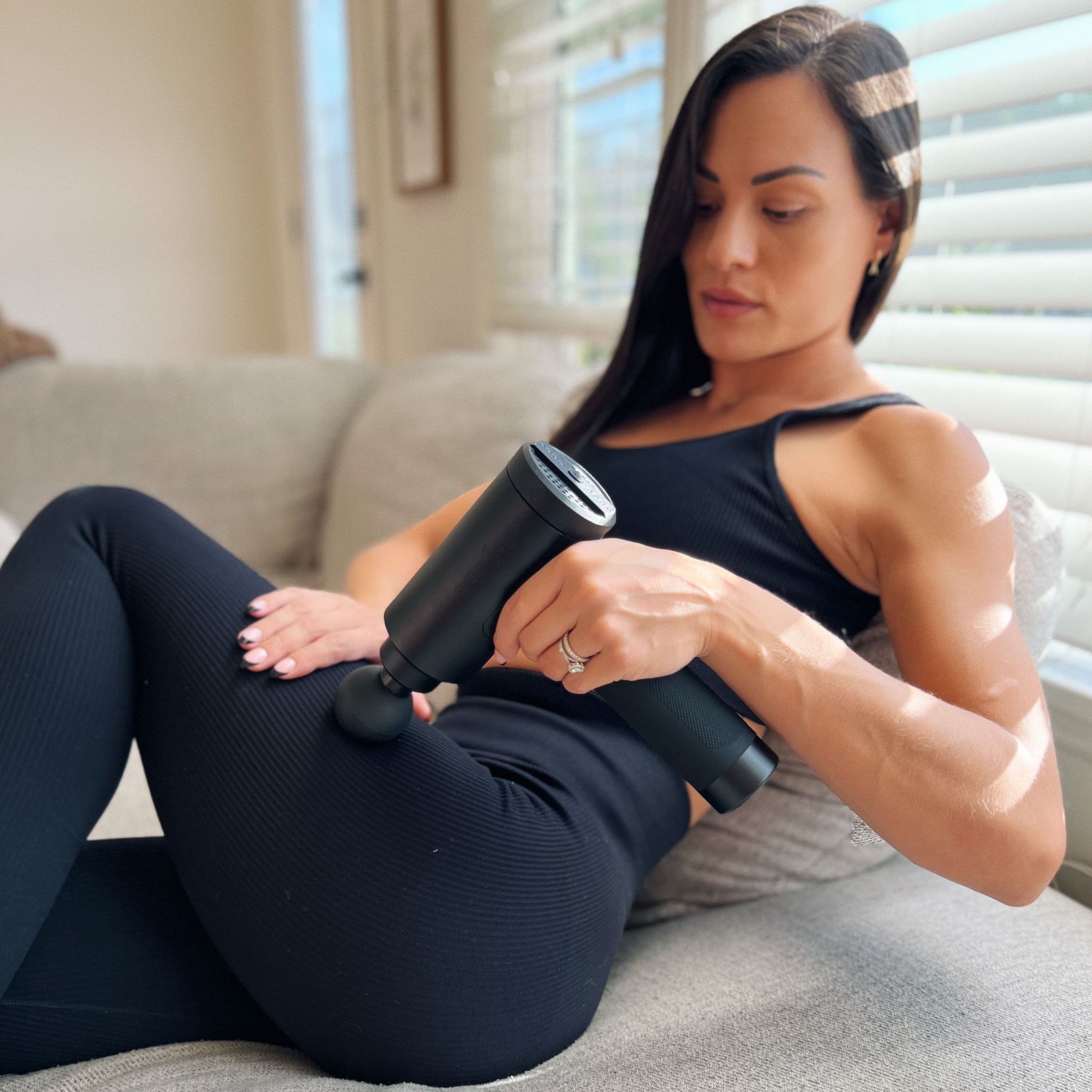
Our body is a temple, and its well-being determines our quality of life. We often need to remember to listen to our bodies and give them the proper attention due to a lack of time, information, or energy.
As a fitness enthusiast or athlete, recovery can and should be an ever-growing aspect of your workout and recovery routine. Research shows, for example, that regular exercise places tremendous stress on the neuromuscular system and can lead to injury, burnout, and poor performance without adequate recovery between sessions.1
Therefore, knowing how to care for our body and being consistent is necessary, especially after physical activity.
These are some simple and time-efficient essential tools for adequate recovery:
1. Creatine.
If you’re just beginning to incorporate recovery into your fitness routine and would like extra support, there are supplements you can take. Sports Research® Creatine helps ensure you have enough of the essential protein-building amino acid in your system and supports workout recovery when taken over time with exercise.
2. Foam Roller.
Foam rollers reduce muscle tension, eliminate muscle knots, and increase flexibility. Studies show foam rolling can increase joint range of motion and decrease muscle soreness after intense exercise.2
3. Stretching.
A brief stretch at the end of any physical activity is vital to relax muscles and reduce the risk of injury. Sweet Sweat’s Non-Slip Yoga Mat may be a helpful accessory and provide extra support and cushion when a regular floor may be too hard against your muscles.
4. Massage Gun.
Massage guns allow you to apply targeted pressure and therapeutic vibration to any part of your body on the go. It relieves muscle pain and fatigue and feels like having a masseuse in the comfort of your home.
5. Epsom Salts
These salts contain magnesium and offer multiple therapeutic benefits. They help prevent pain, especially in injured or inflamed areas. Try soaking in an Epsom salt bath after intense exercise to relieve muscle pain and tension.
It is important to remember that everyone’s body recovers differently and will respond to each one of these tools uniquely. Factors such as the intensity of a routine or lifestyle are essential when deciding what your body may need to function at its best both in and outside the gym. Listen to your body and adjust your recovery strategy according to your needs to treat or prevent injury and give your body what it needs.
Sources:
https://journals.lww.com/nsca-scj/Abstract/2004/08000/Maximize_Recovery.16.aspx
https://www.ncbi.nlm.nih.gov/pmc/articles/PMC4637917/
[ESP] Herramientas para una recuperación efectiva
Nuestro cuerpo es un templo y su bienestar determina la calidad de vida que tenemos.
Muchas veces irónicamente nos olvidamos de escucharlo y darle la atención adecuada por falta de tiempo, de información o simplemente falta de energía.
Saber cuidar de nuestro cuerpo y ser consistente es necesario, especialmente después de realizar actividad física ya que la recuperación es un aspecto crítico de cualquier rutina de ejercicio y trae muchos beneficios.
Algunas investigaciones demuestran, por ejemplo, que el ejercicio regular genera un estrés tremendo en el sistema neuromuscular y puede provocar lesiones, agotamiento y bajo rendimiento sin una recuperación adecuada entre sesiones.
Estas son algunas herramientas esenciales para tener una recuperación efectiva, son opciones sencillas y no requieren de mucho tiempo:
1. Creatina.
Empezamos con la creatina ya que se toma antes de hacer ejercicio y ayuda con el rendimiento y la fuerza durante el entrenamiento, además juega un papel importante en la parte de la recuperación. Si apenas está comenzando a incorporar la recuperación en su rutina y desea ayuda adicional, la creatina Sports Research® es una excelente opción.
2. Rodillo de espuma.
Los rodillos de espuma reducen la tensión muscular, eliminan los nudos musculares y aumentan la flexibilidad. Estudios demuestran que el rodillo de espuma puede aumentar el rango de movimiento de las articulaciones y disminuir el dolor muscular después de un entrenamiento intenso.
3. Estiramiento.
Un estiramiento breve al final de cualquier actividad física es clave para relajar los músculos y reducir el riesgo de lesiones. El mat de yoga Sweet Sweat puede ser un accesorio útil y brindar soporte y amortiguación adicional.
4. Pistola de masajes.
La pistola de masajes le permite aplicar presión y vibración terapéutica a cualquier parte del cuerpo y alivia la fatiga muscular. Es como tener a un masajista en la comodidad de su casa.
5. Sales de Epsom.
Estas sales contienen magnesio y ofrecen múltiples beneficios terapéuticos. Ayudan a evitar dolores especialmente en áreas lesionadas o inflamadas. Intente sumergirse en un baño de sales de Epsom después de realizar ejercicio intenso, su cuerpo se lo agradecerá.
Es importante recordar que la recuperación de cada persona es distinta y depende de factores como la intensidad o la duración de la rutina. Escuchen a su cuerpo y ajusten su estrategia de recuperación de acuerdo a sus necesidades para tratar o prevenir lesiones y darle a sus cuerpos lo que realmente necesitan.